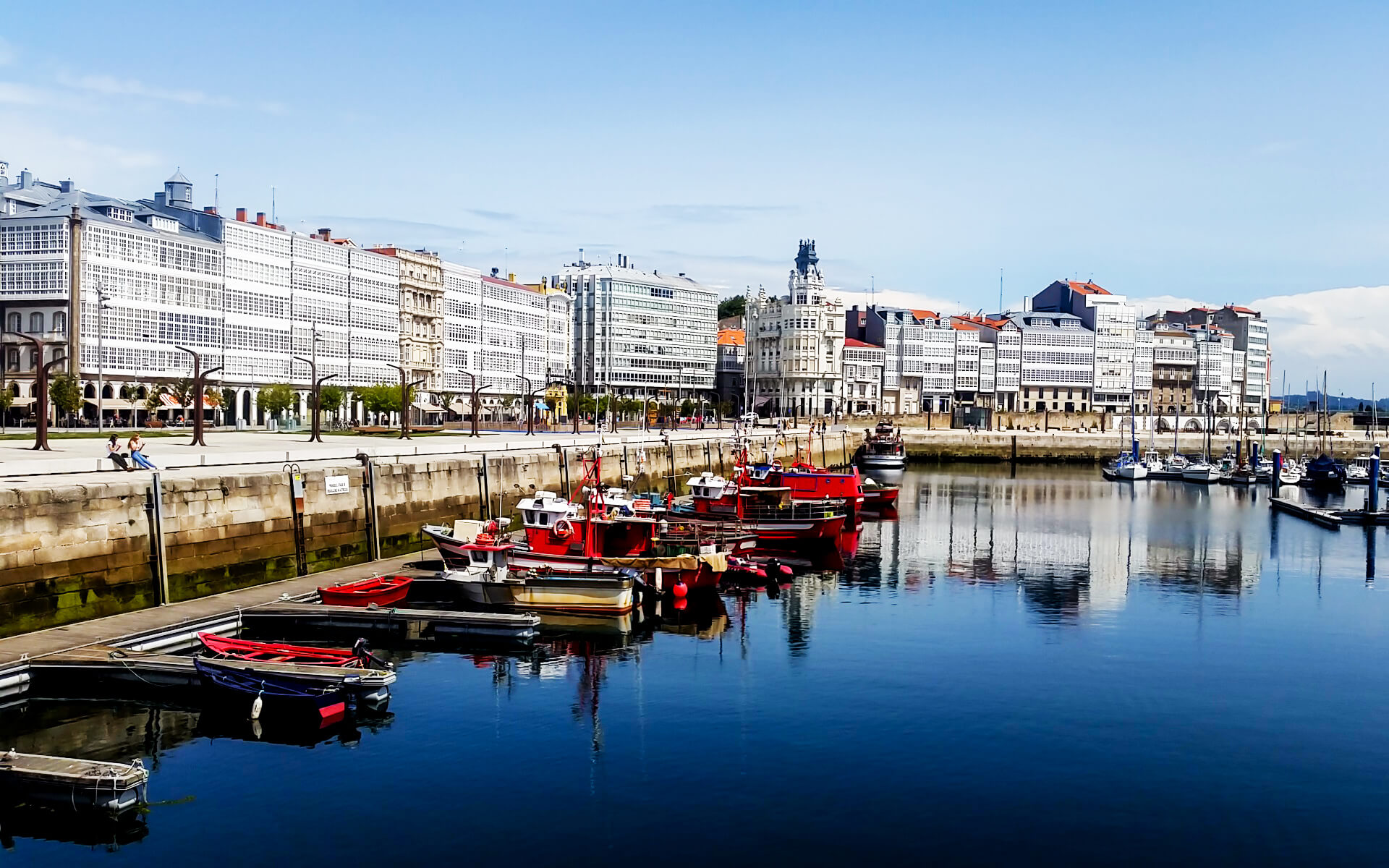In recent years, tourism in A Coruña has grown to the point that it now receives 62 cruise ships each year.
A Corua’s two major beaches (Orzán and Riazor) are situated in the city center and are bounded by the promenade above. This position makes them a popular tourist destination, as well as a popular gathering place for surfers throughout the year. Other beaches in the city include As Lapas, San Amaro, Oza, and Matadoiro. These four beaches, together with Riazor and Orzán, were awarded blue flag status in 2011.
An major festival is celebrated on the night of San Juan / Xan Xoán, with a large fireworks display, procession, bonfires, and the ancient flames on all city beaches until morning.
For the first time ever, the number of visitors in 2006 almost doubled the city’s population, with over 500,000 individuals choosing the city as a tourist destination.
The city has a substantial hotel network, with around 3,000 hotel vacancies. There is one five-star hotel, 11 four-star hotels, and several more hotels and hostels. The city is also focused on business tourism, with the Congress and Exhibition Centre PALEXCO, which has a capacity of over 2,500 people, as well as a new trade fair center, EXPOCORUÑA, which hosts concerts, exhibits, and festivals such as Sónar.
MAIN SIGHTS
The RomanTower of Hercules, a lighthouse that has been in continuous service since perhaps the 2nd century AD, is located in the city. UNESCO has designated it as a World Heritage Site. A huge public park with a golf course and a former Muslim cemetery surrounds it. The lighthouse is the primary symbol on the city’s flag and coat of arms.
The city is particularly widely recognized for its distinctive glass window balconies, known as galeras. Originally, this style of building arose as a naval architectural solution for difficult weather, specifically constructed for rainy days. This trend began in the 18th century in Ferrol, when some technicians working for the Royal Dockyards had the notion to use the design of the rear of a war ship in a contemporary structure. Soon after, most northern Spanish seaports, including the Basque area, added similar glass window balconies to their city-port buildings.
The oldest area of A Coruña is known as the Old Town (Ciudad Vieja in Spanish, Cidade Vella in Galician). During the ninth and tenth centuries, the residents of what was then known as Faro Island (the peninsula where the Tower of Hercules sits) fled the region owing to repeated Viking invasions and moved in the Betanzos area. In 1208 King Alfonso IX refounded the city at its current location and placed it under his personal administration, free of loyalty to the church or feudal lords. The Old Town’s barely remaining city walls, as well as three harbours: the Parrote and San Miguel, were constructed in the fourteenth century. It also retains the Old Fortress, which has been turned into the Garden of San Carlos, where Sir John Moore is buried. The streets and squares of A Coruña’s Old City have been preserved, as have aristocratic homes and apartments like as Rosalia de Castro’s house on Prince Street. Notable structures include the Royal Galician Academy, an institution dedicated to the study of Galician culture and, in particular, the Galician language, the Romanic churches of Santiago and Saint Mary, As Bárbaras Monastery (Romanic and Baroque), and the headquarters of the Spanish Army’s Operational Logistics Force. A Medieval Fair is held in the streets of the Old City every July.
There are various museums in the city, including the Castle of San Antón Archaeological Museum, the Fine Arts Museum, the Unión Fenosa Museum of Contemporary Art (MACUF), and a network of scientific institutions (Casa das Ciencias, which also includes a planetarium, DOMUS, made by Arata Isozaki and Aquarium Finisterrae). The National Museum of Science and Technology (MUNCYT) established a branch in the city in 2012. Summer evenings are the busiest for A Coruña’s social scene. The majority of the pubs and clubs are located on Calle Orzan, which runs parallel to Paseo Maritimo on the beach side. Los Jardines (The Gardens), a park at the entrance of Calle Real and the Los Cantones Village Shopping Centre, is another popular destination for a younger demographic.


